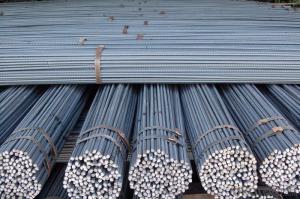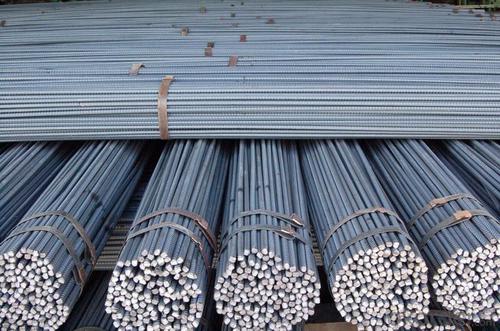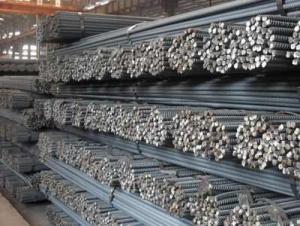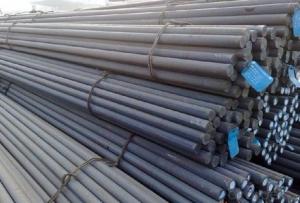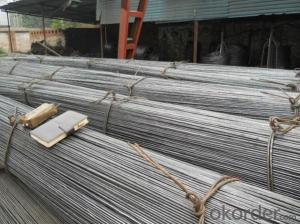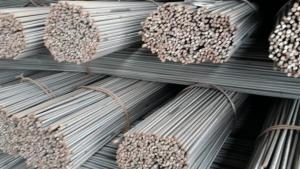BST500S deformed steel bar for construction
- Loading Port:
- Tianjin
- Payment Terms:
- TT OR LC
- Min Order Qty:
- 25 m.t.
- Supply Capability:
- 10000 m.t./month
OKorder Service Pledge
OKorder Financial Service
You Might Also Like
Product Description:
Specifications of HRB400 Deformed Steel Bar:
Standard | GB | HRB400 | |
Diameter | 6mm,8mm,10mm,12mm,14mm,16mm,18mm,20mm, 22mm,25mm,28mm,32mm,36mm,40mm,50mm | ||
Length | 6M, 9M,12M or as required | ||
Place of origin | Hebei, China mainland | ||
Advantages | exact size, regular package, chemical and mechanical properties are stable. | ||
Type | Hot rolled deformed steel bar | ||
Brand name | DRAGON | ||
Chemical Composition: (Please kindly find our chemistry of our material based on HRB500 as below for your information)
Grade | Technical data of the original chemical composition (%) | ||||||
C | Mn | Si | S | P | V | ||
HRB400 | ≤0.25 | ≤1.60 | ≤0.80 | ≤0.045 | ≤0.045 | 0.04-0.12 | |
Physical capability | |||||||
Yield Strength (N/cm²) | Tensile Strength (N/cm²) | Elongation (%) | |||||
≥400 | ≥570 | ≥14 | |||||
Theoretical weight and section area of each diameter as below for your information:
Diameter(mm) | Section area (mm²) | Mass(kg/m) | Weight of 12m bar(kg) |
6 | 28.27 | 0.222 | 2.664 |
8 | 50.27 | 0.395 | 4.74 |
10 | 78.54 | 0.617 | 7.404 |
12 | 113.1 | 0.888 | 10.656 |
14 | 153.9 | 1.21 | 14.52 |
16 | 201.1 | 1.58 | 18.96 |
18 | 254.5 | 2.00 | 24 |
20 | 314.2 | 2.47 | 29.64 |
22 | 380.1 | 2.98 | 35.76 |
25 | 490.9 | 3.85 | 46.2 |
28 | 615.8 | 4.83 | 57.96 |
32 | 804.2 | 6.31 | 75.72 |
36 | 1018 | 7.99 | 98.88 |
40 | 1257 | 9.87 | 118.44 |
50 | 1964 | 15.42 | 185.04 |
Usage and Applications of HRB400 Deformed Steel Bar:
Deformed bar is widely used in buildings, bridges, roads and other engineering construction. Big to highways, railways, bridges, culverts, tunnels, public facilities such as flood control, dam, small to housing construction, beam, column, wall and the foundation of the plate, deformed bar is an integral structure material. With the development of world economy and the vigorous development of infrastructure construction, real estate, the demand for deformed bar will be larger and larger..
Packaging & Delivery of HRB400 Deformed Steel Bar:
Packaging Detail: products are packed in bundle and then shipped by container or bulk vessel, deformed bar is usually naked strapping delivery, when storing, please pay attention to moisture proof. The performance of rust will produce adverse effect.
Each bundle weight: 2-3MT, or as required
Payment term: TT or L/C
Delivery Detail: within 45 days after received advanced payment or LC.
Label: to be specified by customer, generally, each bundle has 1-2 labels
Trade terms: FOB, CFR, CIF
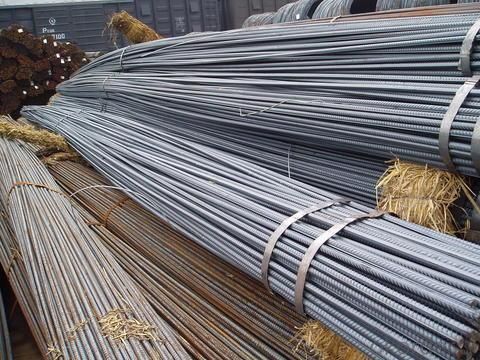
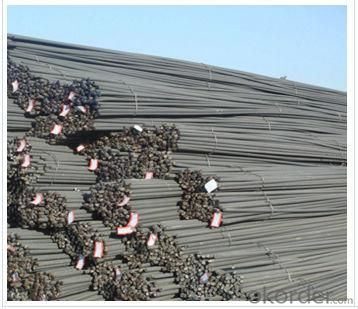
- Q: Two grade steel and three grade steel difference, the construction of the use of thread steel in general how to use the level?
- According to the difference of prestressing strength, the trend is that the strength is higher and higher. The quantity of grade two steel has been replaced by grade three steel, and this year there are many 400E resistant steel
- Q: 8 mm thread steel, how much is a bundle?
- The raw steel billet for the production of threaded steel is carbon structural steel or low alloy structural steel which is treated by calm melting, and the finished steel bar is delivered in hot rolling forming, normalizing or hot rolling state.
- Q: Can steel rebars be used in solar power plant construction?
- Yes, steel rebars can be used in solar power plant construction. Steel rebars are commonly used in the construction industry for reinforcing concrete structures, and solar power plants often require the construction of concrete foundations for the installation of solar panels and other equipment. The use of steel rebars helps to provide structural strength and durability to these concrete foundations, ensuring the stability and longevity of the solar power plant infrastructure. Additionally, steel rebars are resistant to corrosion, which is important in solar power plant construction as they are often exposed to various weather conditions. Overall, steel rebars are a suitable material for reinforcing concrete structures in solar power plant construction.
- Q: What factors affect the cost of steel rebars?
- Several factors can affect the cost of steel rebars. These include the current market demand and supply for steel, the cost of raw materials such as iron ore and scrap metal, transportation and logistics costs, energy costs, labor costs, and any applicable taxes or tariffs. Additionally, fluctuations in currency exchange rates and global economic conditions can also impact the cost of steel rebars.
- Q: Are steel bars used more in high-rise buildings or steel?
- Look at the architectural design requirements and seismic grade, light steel reinforcement is mainly stirrups, columns, beams, shear walls generally use thread steel, plate bars and distribution bars are generally cold and twisted steel bars
- Q: How are steel rebars protected against galvanic corrosion?
- Steel rebars are protected against galvanic corrosion through the application of a protective coating, such as epoxy or zinc, that acts as a barrier between the rebar and the surrounding environment. Additionally, measures like proper concrete cover and adequate concrete quality can also help minimize the risk of galvanic corrosion in steel rebars.
- Q: What are the different types of steel rebars used in marine construction?
- There are several different types of steel rebars commonly used in marine construction projects. These types of rebars are specifically designed to withstand the harsh conditions and corrosive environments typically found in marine structures. 1. Stainless Steel Rebars: These rebars are made of high-grade stainless steel, which contains chromium and nickel. Stainless steel rebars offer excellent resistance to corrosion and are commonly used in marine construction where exposure to saltwater and other corrosive elements is expected. They are more expensive than other types of rebars but provide superior durability and longevity. 2. Epoxy-Coated Rebars: Epoxy-coated rebars are carbon steel rebars that have been coated with an epoxy layer. This coating acts as a protective barrier, preventing the steel from coming into contact with corrosive elements and reducing the risk of rust and corrosion. Epoxy-coated rebars are commonly used in marine construction projects where saltwater exposure is high. 3. Galvanized Rebars: Galvanized rebars are carbon steel rebars that have been hot-dip galvanized. This process involves coating the steel with a layer of zinc, which provides excellent corrosion resistance. Galvanized rebars are commonly used in marine construction projects where exposure to seawater or salt spray is expected. 4. Fiberglass Rebars: Fiberglass rebars are made of high-strength glass fibers embedded in a polymer matrix. These rebars offer excellent resistance to corrosion, as they are not affected by saltwater or other corrosive elements. Fiberglass rebars are lightweight, non-magnetic, and have a high tensile strength, making them suitable for marine construction projects. 5. Carbon Steel Rebars: Carbon steel rebars are the most common type of rebars used in construction, including marine projects. While they are not inherently resistant to corrosion, they can be treated with protective coatings, such as epoxy or galvanization, to enhance their durability and resistance to corrosive environments. It is important to consider the specific requirements and conditions of a marine construction project when selecting the appropriate type of steel rebars. Factors such as exposure to saltwater, humidity, and the expected lifespan of the structure should be taken into account to ensure the longevity and safety of the marine structure.
- Q: What is the difference between steel rebars and FRP rebars?
- Steel rebars are traditional reinforcement bars made of steel, while FRP rebars are reinforced polymer bars. The main difference lies in their composition and properties. Steel rebars are strong and durable, but they are prone to corrosion, requiring regular maintenance. On the other hand, FRP rebars are corrosion-resistant, lightweight, and possess high tensile strength. They also offer better thermal and electrical insulation. However, FRP rebars are relatively new in the construction industry and may be more expensive compared to steel rebars.
- Q: How do steel rebars affect the overall sound insulation of a building?
- Steel rebars do not have a direct impact on the overall sound insulation of a building. The primary purpose of steel rebars in construction is to reinforce concrete structures and provide strength and stability. Sound insulation is primarily influenced by the materials and design of the walls, floors, and ceilings, as well as proper installation of acoustic barriers and insulation materials. While steel rebars can transmit sound to some extent due to their density, their impact on sound insulation is generally negligible compared to other factors. Sound insulation in buildings is achieved by using materials with high sound absorption properties, such as acoustic insulation panels, mineral wool, or soundproofing barriers.
- Q: How do steel rebars bond with concrete?
- Steel rebars bond with concrete through a process called mechanical interlock, where the rough surface of the rebar provides better adhesion to the concrete. Additionally, the alkaline environment of the concrete forms a thin layer of iron oxide on the surface of the rebar, which further enhances the bond and prevents corrosion.
Send your message to us
BST500S deformed steel bar for construction
- Loading Port:
- Tianjin
- Payment Terms:
- TT OR LC
- Min Order Qty:
- 25 m.t.
- Supply Capability:
- 10000 m.t./month
OKorder Service Pledge
OKorder Financial Service
Similar products
Hot products
Hot Searches
Related keywords
